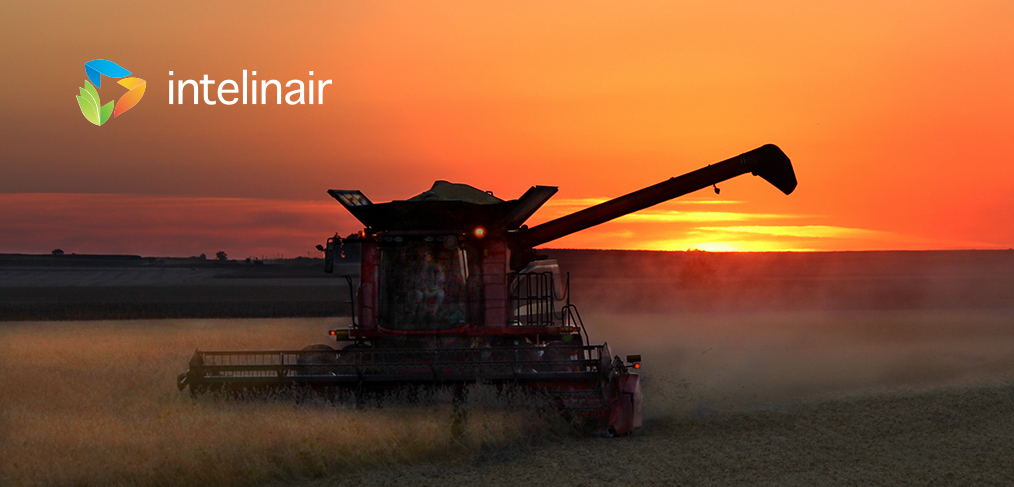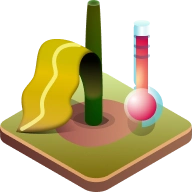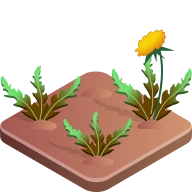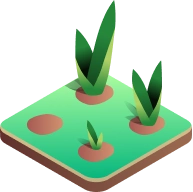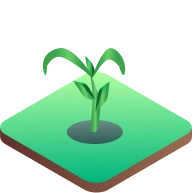
With the 2021 corn and soybean harvest coming to an end, there is no better time to look back on the year and take stock of its challenges and opportunities. No two seasons are ever the same, and this one certainly provided its own set of unique obstacles for farmers to negotiate in the ever-important task of feeding the world.
This season, two notable and unprecedented challenges faced farmers in what was initially predicted to be an exceptionally strong harvest of 214 bu/acre of corn and 64 bu/acre of soybeans, according to Illinois farmdoc daily. These two challenges included a spike of late-season Tar Spot infection and an extremely rainy October. While the numbers are not in yet, some analysts are commenting that the earlier expectations may not be met.
Late-season disease is something of a novel issue for Midwest corn and soybean growers. Of course, diseases, even late-season ones, are themselves nothing new, but Tar Spot, this year’s particular perpetrator, is. Discovered as recently as 2015, this fungus spreads rapidly and can reduce corn yields by as much as 100 bu/acre if left untreated. If that was not enough, it has a unique habit of infecting fields in the late season, after most fungicide treatments are completed and even long mode-of-action applications have worn off. This gives the disease almost unimpeded access to entire fields of mature corn, which makes it nearly impossible to detect until it has already spread across many acres. While Tar Spot is not the only disease that can infect crops in the late season, its novelty and virulence make it difficult to effectively counter, especially in a part of the season already fraught with disease prevention challenges. The yield losses from this and other diseases, coupled with the wet season that allowed them to spread, will likely be significant.
Harvest-time rain, on the other hand, is not a new concern. This does not mean it is any less challenging. While a few days of light rain often pose minimal problems. October was the second wettest October ever recorded in the state of Illinois, and the 14th wettest month recorded overall. The southeastern portion of the state crossed 10 inches of precipitation in some areas, a solid 4-6-inch increase from the 10-year average. In Sangamon County, five days had over half an inch of precipitation, three of which rained more than an inch, which is more than enough to completely stop field work, certainly for a day or more. Losing this time in October, when the majority of corn and soybean harvesting takes place, led to a push in November to get everything done on time. Even though the harvest did wind up finishing more or less on schedule, excessive rainfall can still degrade the quality of the crop and lessen market values. The full impact of late-season rains is yet to be completely determined.
So, what can we learn from all of this? Optimizing harvests to beat the weather and maximizing scouting opportunities to identify and counter disease can certainly help deal with these two issues in the future. However, this is easier said than done. The weather can only be predicted so far out, and disease is nearly impossible to detect before it begins killing crops. However, at Intelinair, we took this season’s challenges seriously and have plans to help farmers deal with them in the future.
Our flagship machine learning system for agriculture, AGMRI, offers several features that can directly improve growers’ abilities to harvest even under disease and weather pressure. The first of these is our Disease Detection analytics. AGMRI uses thermal imagery to detect areas of elevated heat within fields. Cross-referencing these areas with other imagery layers allows our AI to accurately predict disease up to two weeks before it begins negatively impacting yield potential, allowing growers to proactively treat it with an appropriate fungicide application.
For dealing with rain, our variable drydown mapping can help farmers proactively harvest their fields to get around inclement weather. Using AI to analyze aerial imagery of fields, our app can detect the dry down rate of various regions of each field, giving growers the necessary information to optimize their harvest. We also provide hyperlocal weather through IBM, which more accurately assesses the situation of each field versus standard forecasting services.
Both of these AGMRI features had promising results in 2021, and we are hard at work improving and optimizing them for the next crop season. Challenges will always be a part of farming, and we are determined to help all growers rise to meet them. To find out more about AGMRI or schedule a demo, visit agmri.com.
About IntelinAir, Inc.
IntelinAir, Inc., the automated crop intelligence company, leverages AI and machine learning to model crop performance and identify problems enabling commercial growers to make improved decisions. The company’s flagship product, AGMRI® aggregates and analyzes data including high resolution aerial, satellite, and drone imagery, equipment, weather, scouting, and more to deliver actionable Smart Alerts on specific problems in areas of fields as push notifications to farmers’ smartphones. The proactive alerts on operational issues allow farmers to intervene, rescue yield, capture learnings for the next season, and identify conservation opportunities for sustainable farming. Annually IntelinAir analyzes millions of acres of farmland, helping growers make thousands of decisions for improved operations and profitability. For more information, follow IntelinAir on LinkedIn, Facebook, Twitter, and Instagram and visit https://www.intelinair.com/.
®Trademark of IntelinAir, Inc.
#AgMRI #Intelinair #RowTracer #WeedWatch #HeatSeeker #TrendZone #YieldRisK #HelpingFarmersProsper #TransformingGlobalAg

